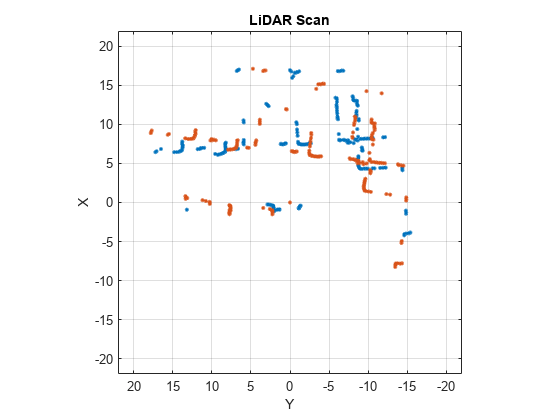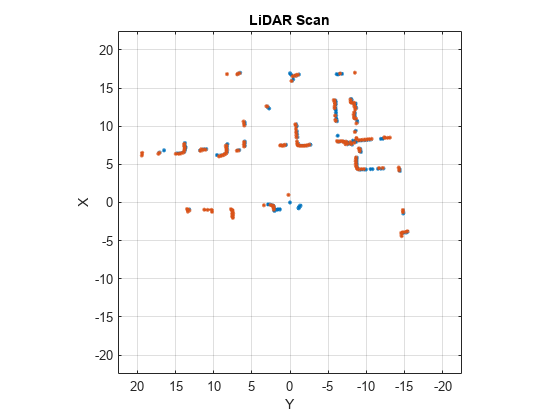matchScansGrid
Estimate pose between two lidar scans using grid-based search
Syntax
Description
pose = matchScansGrid(currScan,refScan)lidarScan and a current lidarScan object using a grid-based search.
matchScansGrid converts lidar scan pairs into
probabilistic grids and finds the pose between the two scans by correlating
their grids. The function uses a branch-and-bound strategy to speed up
computation over large discretized search windows.
[___] = matchScansGrid(___,Name,Value)
specifies options using one or more Name,Value pair
arguments. For example, 'InitialPose',[1 1 pi/2] specifies an
initial pose estimate for scan matching.
Examples
Input Arguments
Name-Value Arguments
Output Arguments
References
[1] Hess, Wolfgang, Damon Kohler, Holger Rapp, and Daniel Andor. "Real-Time Loop Closure in 2D LIDAR SLAM." 2016 IEEE International Conference on Robotics and Automation (ICRA). 2016.
Extended Capabilities
Version History
Introduced in R2020b

